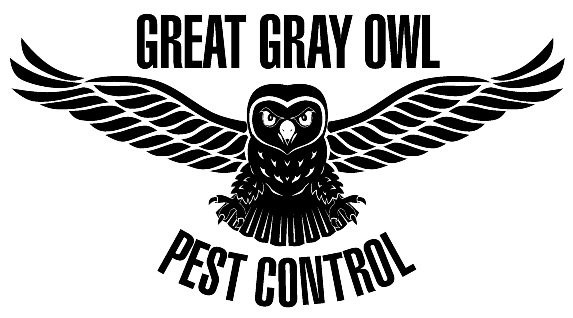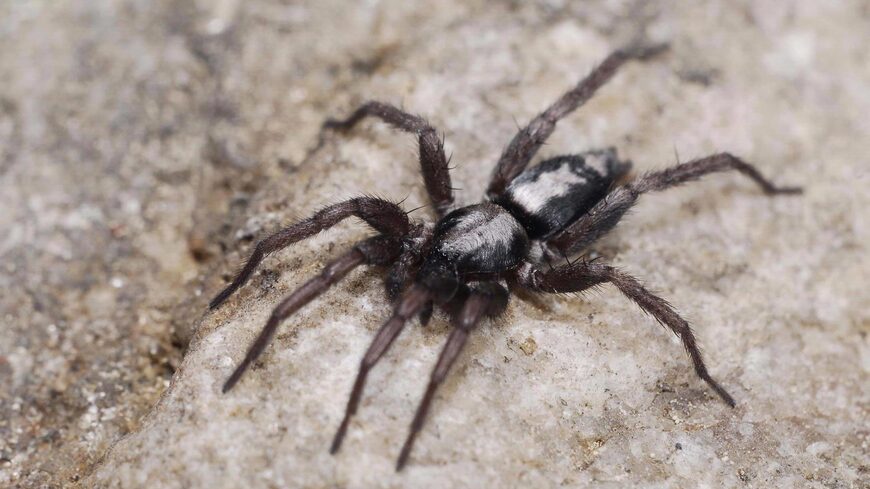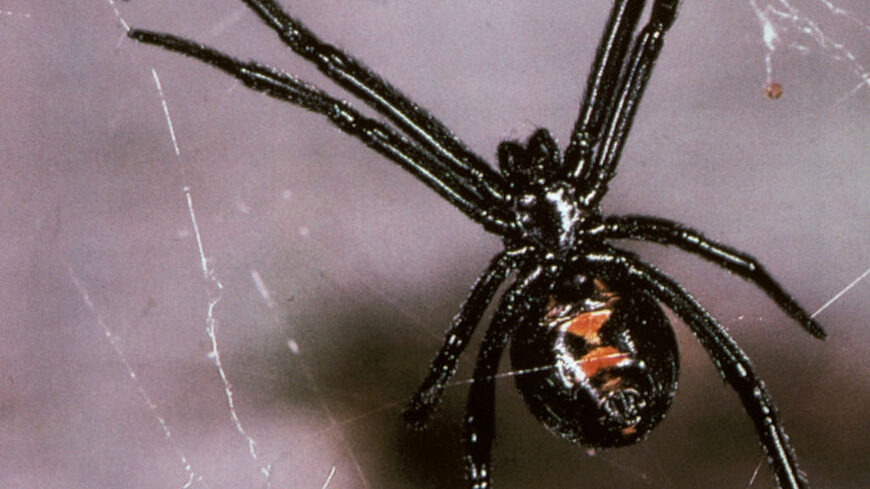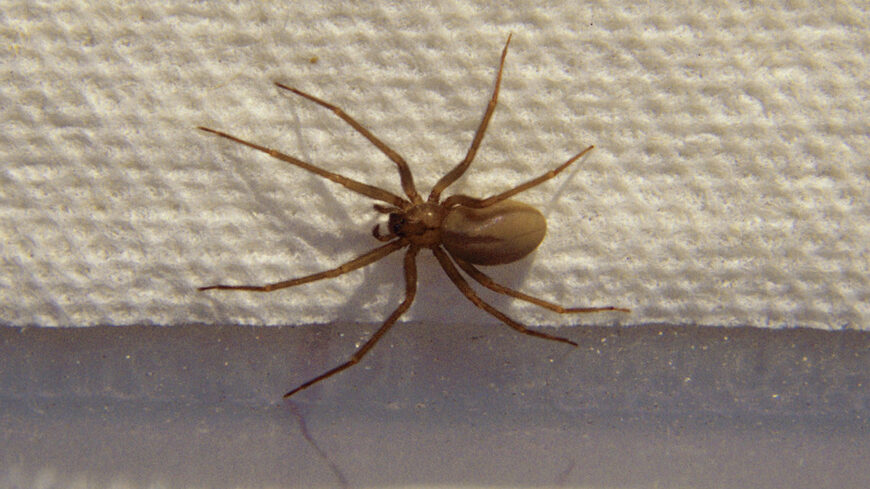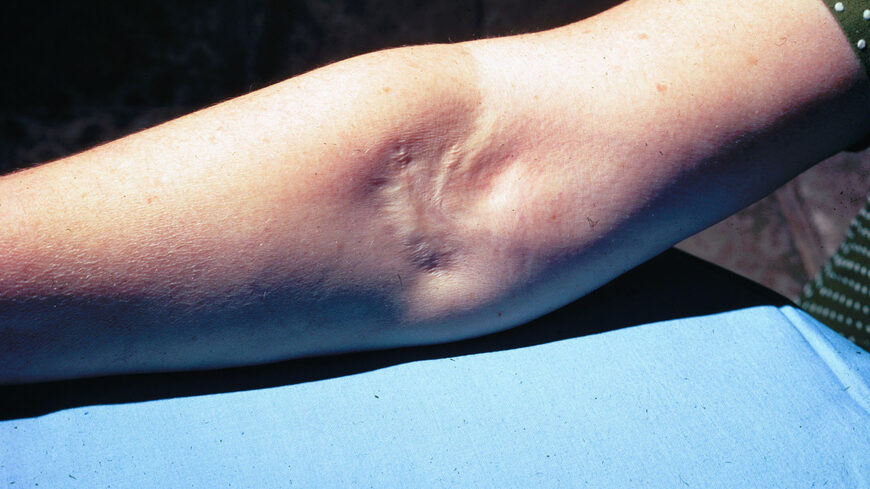We offer Exterior Spider Control for homes and cottages starting in May and continuing all season long. If you would like to be on our Spider List, please telephone us at 705-426-1903 or toll-free at 1-877-882-4403.
We also offer interior spider control for heavy infestations in cellars, attics, crawl spaces and other areas that attract great numbers of spiders. Generally, professional service is warranted if spiders are breeding inside or if outdoor spiders are migrating inside. A regular regimen of do-it-yourself indoor control of spiders can be as simple as frequent vacuuming to suck up live spiders and their egg sacs, then dispose of the vacuum bag outdoors.
Remember, garden spiders are beneficial and make perfect photo opportunities with their brilliant colors of yellow or red, striking black markings and beautifully intricate webs. They should not be disturbed if they are not on or in the dwelling.
Kinds of Spiders Occurring in Ontario
From house spiders and sac spiders to the poisonous black widow spider and brown recluse, we have over 1400 species of spiders in Ontario. Most bite only if provoked and many are so small their bite has no impact. However, those that do can leave nasty reminders of their presence, especially in allergic individuals. And in the case of the brown recluse and black widow, the bites can be very serious. Being able to identify the spider that bit you is important when medical care is required.
Many spiders are associated with moisture and generally are found in basements, crawl spaces, and other damp parts of buildings. Others live in warm dry places and can be found in subfloor air-vents, in upper corners of rooms and in attics. Most species hide either in cracks, in darkened areas or in retreats they construct of silk.A common spider found indoors is the Parsons spider.
Brown Recluse
Brown recluse occur in the United States, Mexico and Canada. In the US, their range extends from the southern Midwest down to the Gulf of Mexico. To get more specific, the brown recluse spider has been seen from southeastern Nebraska through southern Iowa, Illinois, and Indiana to southwestern Ohio. Moving south, their range also extends from western Georgia to the central parts of Texas. They are rarely ever seen west of the Rockies, and if they are, they have been transported.
In Mexico, the Brown Recluse Spider tends to hang around the border, and does not extend too far south into the country. As for Canada, this spider stays around southeast Ontario, and in the southern parts of Quebec.
The brown recluse spider, Loxosceles reclusa (Gretsch), can be a very dangerous biter. However, they are non-aggressive and run for cover when disturbed. Bites occur when a person rolls over on one in bed or puts on old clothes that may have been hanging in a garage. The initial pain associated with the bite is not intense and generally less troublesome than a bee sting. However, within 8 to 12 hours the pain becomes quite intense and over a period of a few days a large ulcerous sore forms. This sore heals very slowly and leaves a large, ugly disfiguring scar.
The brown recluse is a soft-bodied secretive species found in homes and other buildings. Adults vary from 3/10- to 1/2-inch long and they are yellow to dark brown with a violin-shaped mark on the cephalothorax (top) which gives it the commonly called name, "fiddleback spider." They are usually found indoors, especially in bathrooms, bedrooms, closets, garages, basements and cellars. The web is not elaborate and is best described as an off-white to gray, nondescript type of webbing.
Black Widow Spider
The black widow spider, Latrodectus mactans (Fabricius), is widely distributed over the warmer portions of the United Sates and is now also found in Ontario. Females are easily identified, having a globular, shiny black abdomen with two reddish or yellowish triangles on the underside which form a characteristic hourglass marking. The abdomen is about 1/4 inch in diameter but may be as large as 1/2 inch when the female is full of eggs. The male is much smaller and lighter colored with light streaks on the abdomen.
The web of the black widow is an irregular mass of fibers with a small central area to which the spider retires to wait until its prey becomes ensnared. These webs are frequently constructed under boards, stones or the seats of outdoor toilets. The spider does not usually enter residences.
The venom of the black widow spider contains toxins that are neurotoxic (affects the nervous system). The severity of a person's reaction to the bite depends on the area of the body where the bite occurs, the amount of venom injected, depth of the bite, seasonal changes and temperature. The bite produces a sharp pain similar to a needle puncture. Usually, the pain disappears rapidly. Local muscular cramps are felt 15 minutes to several hours after the bite, spreading and becoming more severe as time goes by. The victim then grows weak, tremors develop and the abdominal muscles show a board-like rigidity. Respiration becomes spasmodic and the patient is restless and anxious. During this period, a feeble pulse, cold clammy skin, labored breathing and speech, light stupor and delirium may be noted. Convulsions and death may result if the victim does not receive treatment. An antivenom specific for the black widow is readily available to most physicians.
